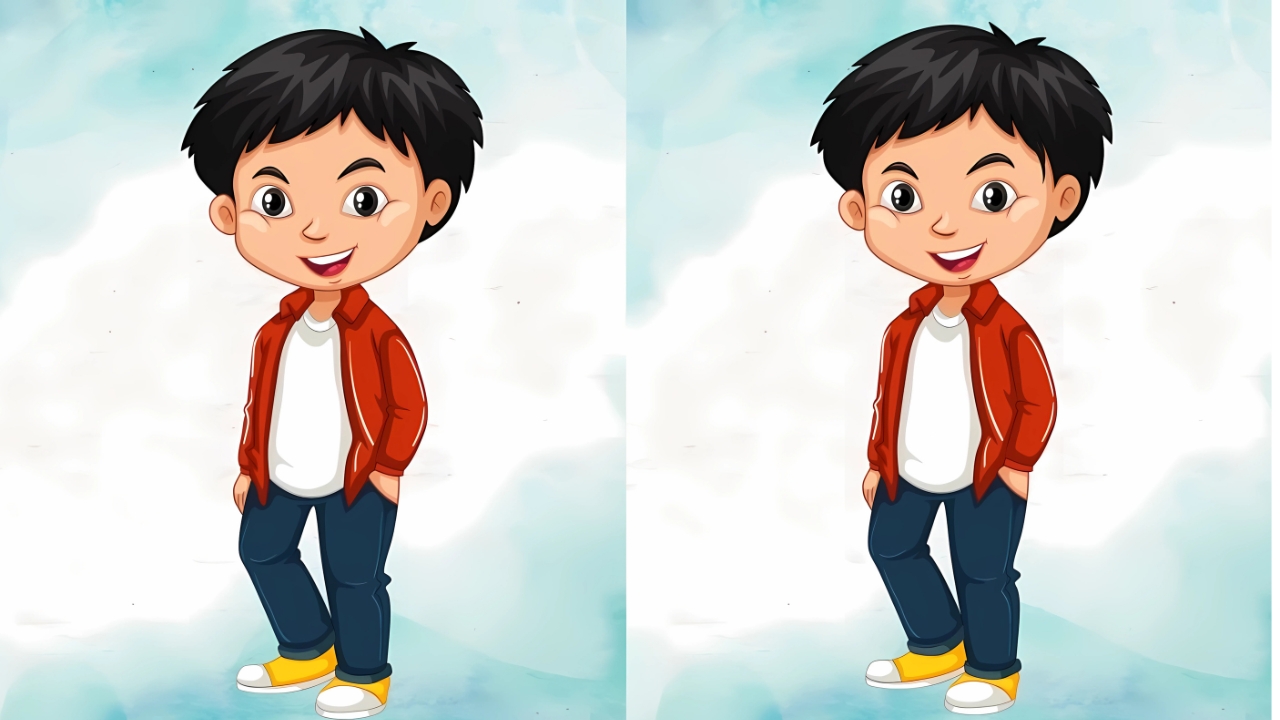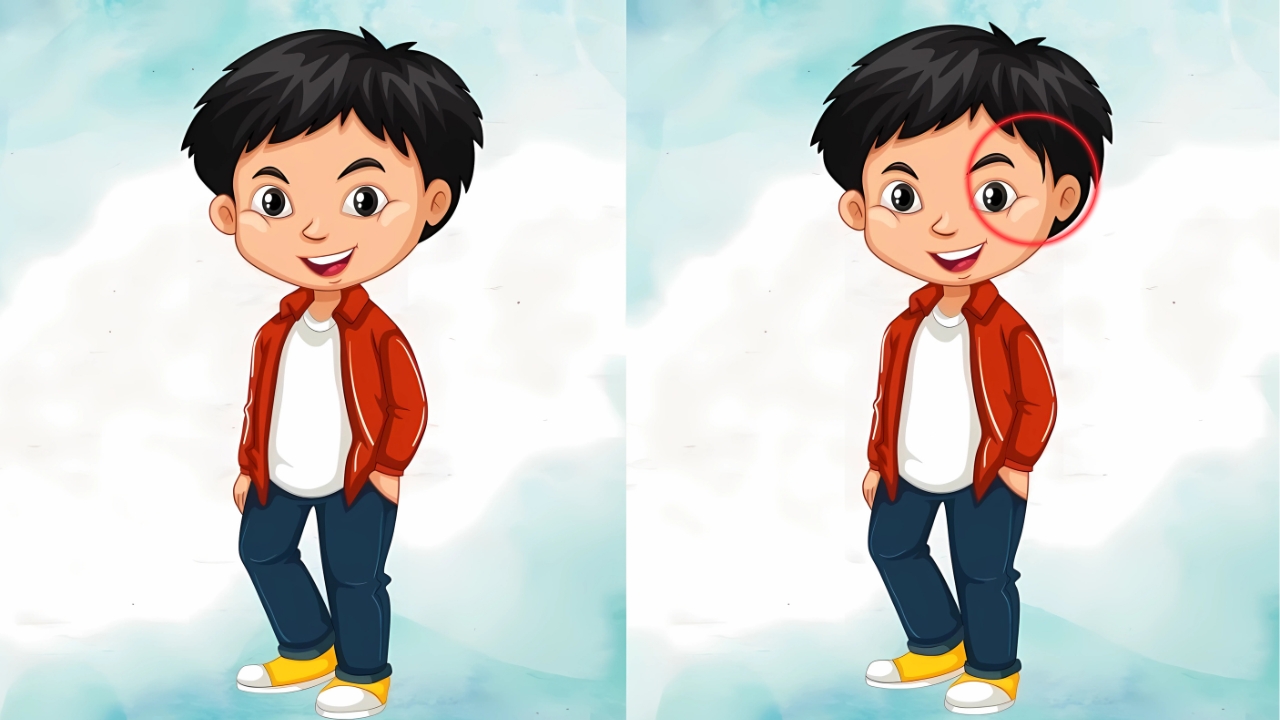Twin Brothers: Optical illusions have fascinated humans for centuries, challenging our perception and revealing the intricate ways our brains process visual information.
Among the most popular and engaging types of optical illusions are spot-the-difference puzzles, particularly those featuring seemingly identical twins or duplicate images.
These brain-teasing challenges not only provide entertainment but also serve as powerful tools for cognitive development and mental acuity enhancement.
Understanding the Psychology Behind Twin Difference Puzzles

When we encounter images of twin brothers or identical-looking characters, our brains naturally assume complete similarity.
This cognitive shortcut, known as pattern recognition, helps us process information quickly in daily life. However, it can work against us in spot-the-difference challenges.
Our minds tend to fill in gaps and overlook subtle variations, making these puzzles particularly challenging and rewarding to solve.
The key to mastering these visual puzzles lies in understanding how our visual processing system works.
Think of your brain as a sophisticated computer that categorizes information rapidly. When it sees two similar images, it immediately labels them as “identical” and stops looking for differences.
Training yourself to override this automatic response is the first step toward becoming an expert difference-spotter.
Why Three Differences Create the Perfect Challenge
The magic number three appears frequently in cognitive psychology and puzzle design for good reason. When puzzles contain exactly three differences, they strike an optimal balance between challenge and achievability.
One difference might feel too easy, while five or more can become overwhelming and frustrating.
Three differences allow solvers to experience multiple “aha!” moments while maintaining focus and motivation throughout the solving process.
These carefully crafted puzzles often incorporate differences across various visual elements: clothing details, facial features, background objects, color variations, or positioning changes.
This variety ensures that solvers must examine every aspect of the image systematically, rather than focusing on just one type of element.
Essential Techniques for Spotting Hidden Differences
The Systematic Scanning Method
Rather than randomly searching across the image, successful difference-spotters employ systematic approaches. Start by dividing the image into a mental grid, examining each section thoroughly before moving to the next.
Begin with the most prominent features like faces, clothing, and major objects, then gradually work toward smaller details and background elements.
Think of this process like reading a book – you wouldn’t skip randomly from page to page, but rather read systematically from beginning to end.
Similarly, scanning images in an organized pattern ensures you don’t miss any subtle variations that might be hiding in plain sight.
The Comparative Analysis Technique
Advanced solvers often use a side-by-side comparison method, focusing on corresponding elements between the two images.
Cover one image partially while examining specific features in the other, then switch your focus. This technique helps isolate individual elements and makes subtle differences more apparent.
For example, when examining twin brothers in matching outfits, compare their jacket buttons one by one, check each hair strand, and analyze facial expressions feature by feature.
This methodical approach transforms overwhelming visual information into manageable, comparable segments.
Cognitive Benefits of Regular Practice
Enhanced Attention to Detail
Regular engagement with difference-spotting puzzles significantly improves your ability to notice subtle variations in daily life.
This enhanced attention to detail can benefit professional activities requiring precision, from medical diagnosis to quality control in manufacturing, and even improve personal relationships by helping you notice small changes in others’ moods or appearance.
Improved Visual Processing Speed
As you practice these puzzles regularly, your brain develops more efficient pathways for visual information processing. What once took several minutes to solve may eventually take just seconds, demonstrating remarkable neuroplasticity and cognitive adaptation.
Memory and Concentration Development
These puzzles also serve as excellent exercises for working memory and sustained concentration. Holding multiple visual details in mind while scanning for differences strengthens the same cognitive muscles used in academic and professional problem-solving situations.
Advanced Strategies for Challenging Puzzles
When tackling particularly difficult three-difference puzzles, consider employing the “negative space” technique.
Instead of focusing solely on the obvious objects and characters, pay attention to spaces between elements, shadows, and background details. Often, the most cunningly hidden differences lurk in these overlooked areas.
Another powerful approach involves the “color isolation” method, where you mentally filter the image to focus on specific colors or tones.
This technique can reveal subtle shade variations or missing color elements that might otherwise blend into the overall visual composition.
Optical Illusion Answer

Frequently Asked Questions
Q: How long should it take to find three differences in a twin brothers puzzle? A: Most people can solve three-difference puzzles within 30 seconds to 3 minutes, depending on the difficulty level and their experience with such challenges.
Q: Are these puzzles suitable for improving children’s observation skills? A: Absolutely! These puzzles are excellent educational tools that help children develop focus, patience, and analytical thinking while having fun.
Q: Can solving these puzzles help prevent cognitive decline in older adults? A: Yes, regular engagement with visual puzzles can help maintain cognitive flexibility and may contribute to overall brain health as part of a mentally stimulating lifestyle.